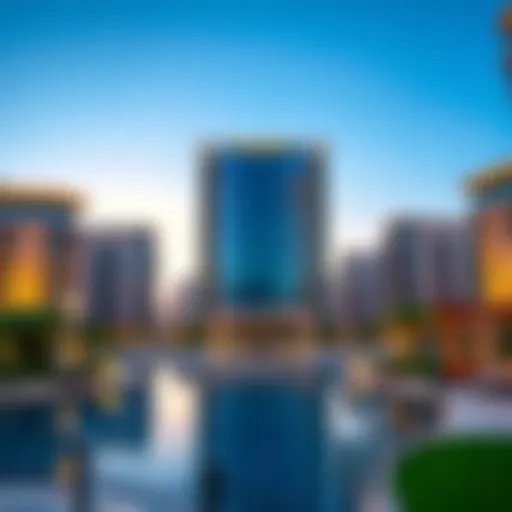Exploring Light Commercial Towers in Dubai's Market
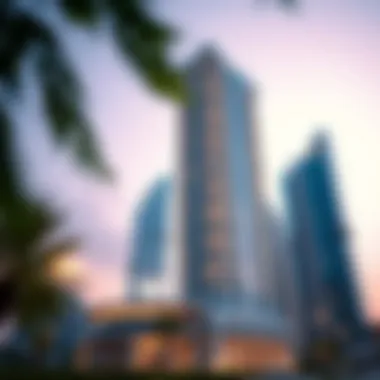
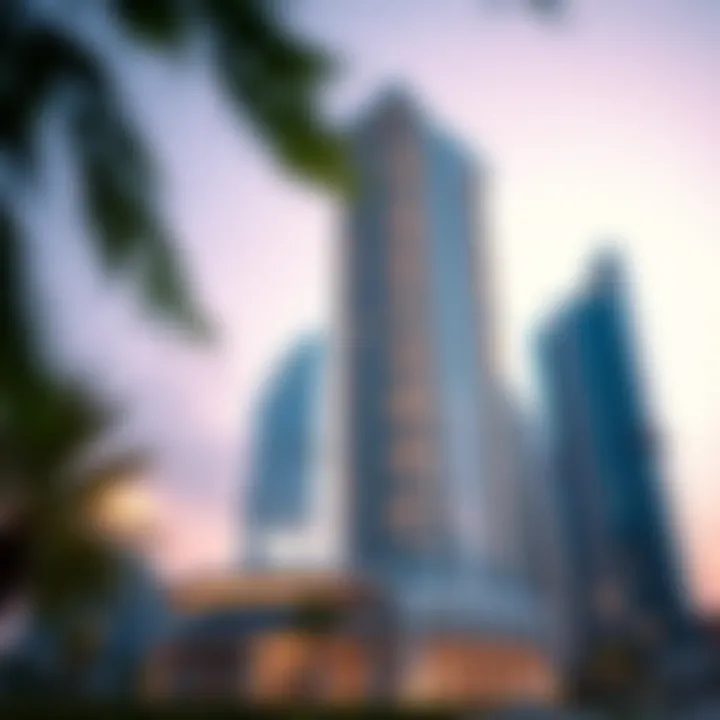
Intro
As Dubai's skyline continues to evolve, a new architectural trend has begun to take shape: light commercial towers. These structures are not just striking pieces of design but serve a vital role in the city’s economy. Unlike traditional commercial buildings, light commercial towers are characterized by their adaptability for a variety of uses, from office spaces to retail units. They blend modern architecture with functionality, catering to the diverse needs of a growing urban population.
In this guide, we will navigate through the complexities of light commercial towers in Dubai’s real estate landscape. With insights into market dynamics, investment opportunities, and operational aspects, we aim to provide a thorough understanding of these unique structures. Whether you're a seasoned investor or a newcomer to the market, there's something here for everyone.
Market Trends and Insights
Current Market Analysis
Dubai's real estate market is a bubbling cauldron of activity, especially regarding light commercial towers. Currently, demand is soaring, driven by several factors:
- The city's status as a global business hub.
- The influx of expatriates seeking flexible workspaces.
- Government initiatives aimed at boosting the local economy, including the Expo 2020 impact.
As a result, light commercial towers are witnessing higher occupancy rates, with companies gravitating towards these properties due to their prime locations and modern amenities. Investors are increasingly viewing them as a viable option, which signifies a shift in preferences from traditional properties.
Future Predictions
Looking ahead, experts anticipate that this trend will continue. Factors expected to influence the market include:
- Sustainability Practices: With a focus on environmentally friendly construction, future developments may integrate technologies that reduce energy consumption and carbon footprints.
- Digitalization of Workspace: The rise of digital platforms means the layout of light commercial towers will adapt to accommodate an increasing number of startups and tech companies.
- Regulatory Changes: As projects are guided by evolving regulations, understanding these shifts can equip investors with the needed insights to navigate the market.
"The art of good investment is knowing when to strike while the iron is hot."
Property Investment Strategies
Tips for First-Time Investors
For those who are dipping their toes into the Dubai real estate market for the first time, here are a few strategies to consider:
- Research Thoroughly: Knowledge is power. Dive deep into market reports, construction trends, and forecasts to gauge where opportunity lies.
- Network with Professionals: Connect with agents, analysts, and other investors. Building relationships can provide you valuable insights into the local market.
- Start Small: Rather than aiming for a large investment immediately, consider smaller units in light commercial towers to minimize risk while gaining experience.
Understanding the Rental Market
The rental aspect of light commercial towers is another critical area for investors:
- Rental Rates: Keep an eye on prevailing rates in different districts. Locations close to transit hubs or popular business areas often command higher rents.
- Tenant Diversity: A variety of businesses create stability. Look for investments that attract a mix of tenants, such as cafes, co-working spaces, and retail.
- Duration of Lease: Longer leases provide security, while shorter ones offer flexibility. Tailor your portfolio strategy according to what fits your risk appetite.
Prolusion to Light Commercial Towers
The concept of light commercial towers has taken center stage in the bustling real estate environment of Dubai. This isn’t just another trend; it’s a reflection of a deeper shift towards optimizing space and catering to the growing needs of businesses in a city that’s always on the move. Light commercial towers serve a distinct purpose that goes beyond mere aesthetics. They represent a blend of functionality and design, maximizing the utility of vertical space in a high-density urban landscape.
Definition and Purpose
Light commercial towers refer to multi-story buildings that primarily accommodate light commercial activities, such as offices, retail outlets, and sometimes even residential units. Their primary purpose is to provide flexible spaces that cater to the varied needs of businesses, ranging from startups to established firms. The typical height of these buildings often does not exceed that of traditional commercial towers but is high enough to create an efficient environment for operations and attract a wide array of tenants. Importantly, light commercial towers often feature layout designs that promote collaboration and convenience.
By embracing open floor plans and cutting-edge facilities, these towers not only enhance productivity but also support a culture of innovation among businesses. The benefits of investing in light commercial towers include reduced operational costs, strategic locations that can draw foot traffic, and a growing demand from entrepreneurs looking to establish themselves in a thriving market.
Historical Context
To understand the significance of light commercial towers in today's market, one must consider their historical evolution. The architectural landscape in Dubai has undergone tremendous transformation since the early 2000s, moving from a city characterized by sprawling low-rise buildings to a vertical metropolis. The surge in demand for urban commercial spaces emerged alongside the explosive growth of the region’s economy.
Light commercial towers began to appear in response to a need for space-efficient solutions that meet the demands of modern businesses. Early examples from the late 1990s laid the groundwork for more optimized designs, showcasing how light structures can coexist with larger skyscrapers yet stand distinct with unique features catering to specific business needs.
As the Dubai economy evolved, so did the preferences of investors and tenants. They sought out environments that foster connectivity and accessibility, which light commercial towers inherently offer. Today, these structures are not just spaces to work; they are integral to the ecosystem of Dubai’s commercial landscape, supporting a diverse range of industries while reflecting the rapid pace of urbanization.
Light commercial towers are a bridge between residential life and commercial activities, effectively redefining urban dynamics.
In summary, light commercial towers embody a strategic approach to land use in Dubai, balancing functional and sophisticated design. They cater to a growing recognition of the need for smart commercial spaces that reflect the changing landscapes of work and community. As the city continues to evolve, these buildings will play a pivotal role in shaping its commercial future.
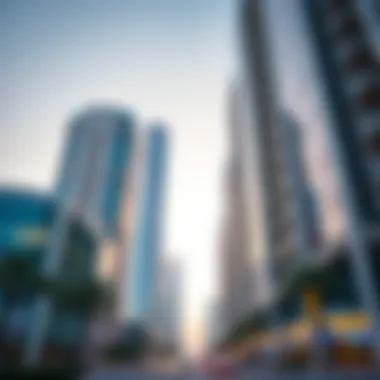
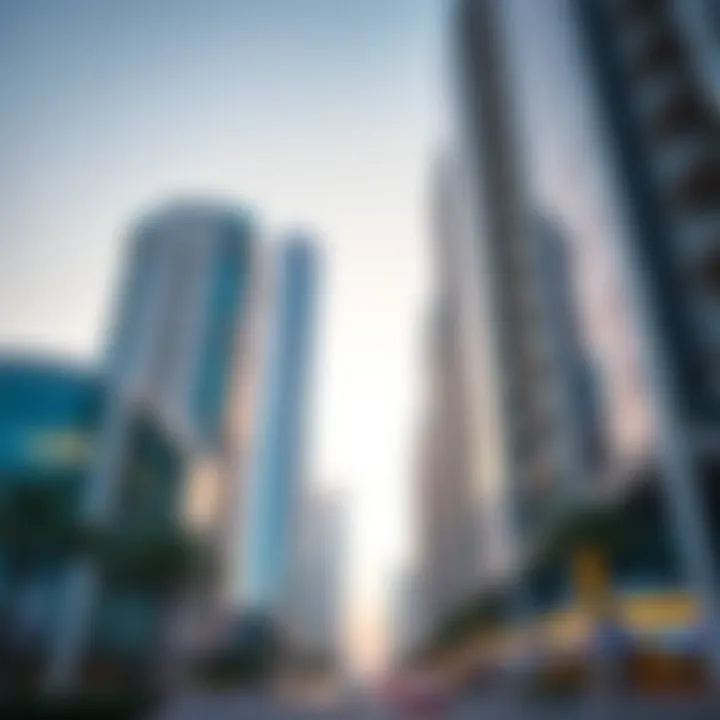
Architectural Characteristics
The architectural characteristics of light commercial towers play a pivotal role in shaping their functionality, aesthetics, and overall appeal in Dubai's real estate market. These structures have to cater not only to businesses but also to a diverse clientele that expects modernity and utility. This examination of design principles, material innovations, and sustainability considerations presents a vital exploration of why architectural characteristics matter in the context of light commercial towers.
Design Principles
When you're talking about design principles, it's all about how a structure serves its intended purpose while enhancing surroundings. For light commercial towers, the focus lies on creating spaces that encourage collaboration and productivity. The overall layout must ensure fluidity between different areas. Think about it: a well-planned tower minimizes wasted space and maximizes usability.
An important factor in design is the height and footprint of these structures. Typically, light commercial towers showcase a delicate balance between striking a tall silhouette and ensuring a smaller land footprint. The use of open floor plans encourages versatility, allowing companies to configure spaces as they see fit.
Consider this: elements like natural light play an integral role in modern design philosophy. Large windows and atriums not only contribute to the overall visual appeal but also provide ample natural lighting, making spaces feel more inviting. These design choices ensure that a commercial tower does not just stand tall, but stands out as a beacon of modern work-life integration.
Material Innovations
Material innovations are at the heart of today's architectural developments, especially in light commercial towers where durability meets aesthetics. Architects are increasingly turning to advanced materials like engineered wood, glass composites, and even carbon fiber, enabling the construction of lighter, more sustainable frameworks without sacrificing strength.
Take for instance the rise of high-performance glass. This innovation allows towers to harness sunlight while reducing heat gain, leading to significant energy savings. Think about the impact: not only does it enhance a building's look, but it also embraces energy efficiency by minimizing reliance on artificial lighting and air conditioning.
Additionally, modular construction methods are gaining traction. Constructing pre-fabricated building sections off-site can significantly reduce construction time and costs. This approach also minimizes waste, which is a vital concern in today's environmentally conscious world. When such innovative materials and methods come together, the architectural possibilities expand, allowing for more playful, creative designs.
Sustainability Considerations
Sustainability has become a cornerstone in the architectural design of light commercial towers, particularly in a city like Dubai where natural resources are often stretched thin. The integration of sustainable practices not only caters to environmental concerns but also appeals to a growing number of eco-conscious renters and buyers.
Going green often means incorporating energy-efficient systems and renewable energy sources. For instance, solar panels on rooftops and green roofs not only contribute to energy savings but also create pleasant environments for occupants to enjoy.
Water conservation is another crucial aspect of sustainable design. Implementing rainwater harvesting systems and using drought-resistant landscaping can significantly lower water usage. These practices resonate well with tenants seeking more than just a workspace; they want to feel they are part of a community that cares about the planet.
In a nutshell, the architectural characteristics of light commercial towers in Dubai demonstrate that thoughtful design, novel materials, and sustainable practices form the backbone of modern commercial real estate development. This not only meets the needs of current market demands but also anticipates future expectations, aligning with global shifts towards more responsible building practices.
"In architecture, through all the complexity, simplicity is the ultimate sophistication." - Leonardo da Vinci
For further information on sustainable architecture and innovations, you can explore resources such as Wikipedia and industry discussions on platforms like Reddit.
Market Demand Analysis
Understanding market demand for light commercial towers is essential for investors, property developers, and stakeholders in Dubai’s real estate sector. The need for such analysis stems from how the evolving landscape shapes investment strategies and drives innovation in design and functionality. Demand analysis not only pinpoints current trends but also forecasts future movements, helping informed decision-making in a competitive market.
Current Trends in Light Commercial Space
As Dubai ushers in a new era of development, the trends in light commercial spaces reveal much about industry dynamics. Post-pandemic, there’s a noticeable shift towards flexible working environments. Businesses now favor spaces that accommodate hybrid models, reflecting a growing preference for amenities that enhance employee well-being. Spaces like co-working areas and communal lounges are becoming commonplace.
Moreover, integrating technology has become a must. Smart buildings that feature automation and energy efficiency are attractive to both tenants and buyers. This mirrors global trends towards sustainability, where occupants prefer spaces that align with their values. As technology advances, demand for spaces equipped with high-speed connectivity and integrated smart systems continues to rise.
Target Demographics
Identifying the target demographics for light commercial towers is critical. The primary users range from startups and small businesses to established corporations seeking satellite offices. Value-for-money propositions resonate well with small to medium enterprises (SMEs). Many are run by skilled expats who find Dubai an appealing base due to its tax advantages and cosmopolitan lifestyle.
On the contrary, larger corporations may seek to establish themselves in prime locations. They look for features such as scalability and adaptability in design. Families and expatriates also influence the market, searching for mixed-use developments that combine residential areas with commercial facilities, enhancing their living experience without needing to travel far for work or leisure activities.
Comparative Market Insights
Comparing current market demands with historical data unveils deeper insights. Over the past few years, light commercial towers have witnessed a surge in popularity. While historically dominated by retail and long-term office rentals, the market now leans heavily towards versatile spaces that can accommodate a variety of functions.
Globally, cities with a thriving tech ecosystem exhibit similar patterns. Take a city like San Francisco. It boomed due to tech startups, leading to a rapid transformation of commercial space to meet demands. Dubai appears to be on a related trajectory, reinforcing the importance of adaptability in design and functionality.
"Understanding market demand is like holding the compass in a dense forest; it helps you find your way through uncertainty."
For a deeper dive into market strategies and dynamics in commercial spaces, consider looking at resources from Wikipedia and Britannica.
Also, explore discussions and insights on platforms like Reddit or industry-specific reports from local government and educational institutes to gather diverse viewpoints.
Investment Opportunities
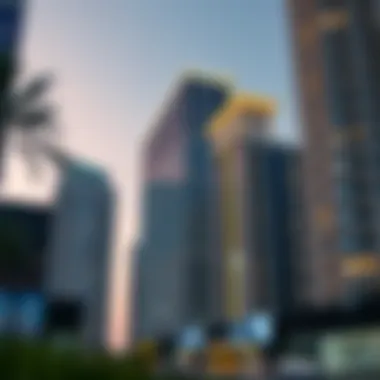
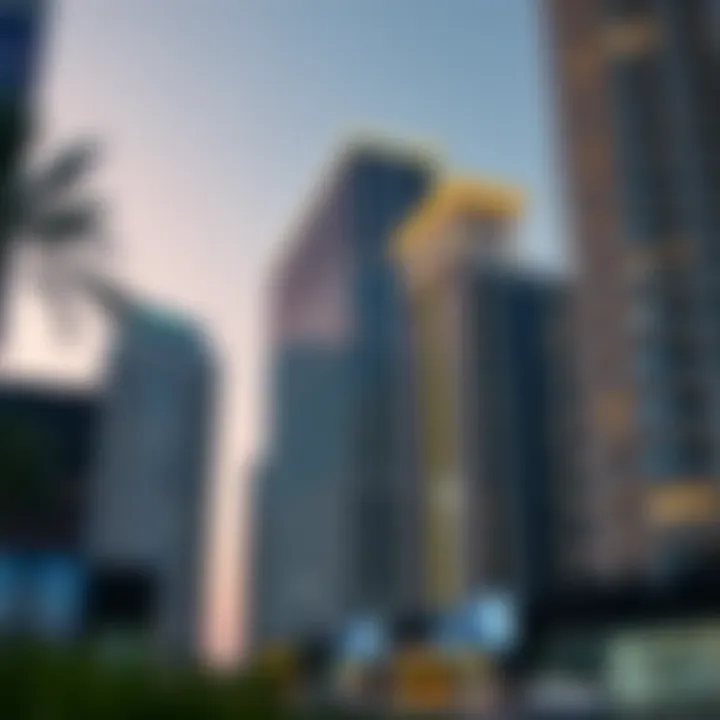
Investment in light commercial towers presents a compelling glimpse into the potential flourishing of Dubai’s real estate sector. These structures are not merely bricks and mortar but represent smart financial choices that cater to today’s market demands. The unique positioning of these towers opens up a myriad of avenues for investors, spanning residential, retail, and office spaces. They often attract diverse tenants, making them appealing for landlords who prioritize stable income and long-term growth.
In an environment like Dubai, where business and tourism flourish, light commercial towers become not just buildings, but thriving ecosystems. High foot traffic areas boost commercial space desirability, arguably making light commercial towers an attractive option compared to traditional commercial properties. More importantly, investing in these towers fuels the overall growth of the urban landscape, even as it offers hefty returns to investors.
Financial Considerations
When pondering investment options in light commercial towers, financial considerations are at the forefront. Investors should rigorously analyze projected costs, including construction, maintenance, and operational expenses. Evaluating the initial capital required is essential. This can include purchase price, financing options, and potential renovations. However, the substantial rental yields in a fast-paced market like Dubai can often offset initial outlays.
Moreover, return on investment (ROI) must be scrutinized. Investors should explore the average rental price per square meter and gauge how timely their capital can appreciate. Current interest rates and financing arrangements are also critical data points, allowing one to understand how they impact cash flow. Moreover, due diligence regarding local market trends should not be overlooked, as they can significantly influence projected earnings.
Long-term Value Prospects
Looking beyond the immediate return, the long-term value prospects of light commercial towers deserve attention. Successful investments are often those that account for both current demand and future growth potential. Light commercial towers in areas designed for expansion—like Dubai’s Business Bay or Jumeirah Lake Towers—hold the advantage of benefiting from urban development initiatives, government support, and population growth.
Moreover, the evolving nature of work and commerce, especially post-pandemic, offers an intriguing perspective. With the rise of flexible workspaces and e-commerce hubs, the adaptability of light commercial towers positions them favorably for sustained relevance in the market.
In many cases, values may rise not just due to rental income but also from increasing demand driven by new businesses sprouting in vibrant areas. Thus, savvy investors might leverage anticipated urban growth, seizing opportunities that others overlook, leading to substantial profits down the road.
Case Studies of Successful Towers
Several case studies of successful towers stand as testament to the investment potential in light commercial real estate. For instance, One Za'abeel, the pioneering structure in Dubai, showcases how innovative architecture can attract premium tenants. Built as a mixed-use tower, its flexible design offered commercial offices alongside residential spaces, ensuring a diverse revenue stream.
Another notable example is the Dubai Design District (d3), which mixes creative companies and art spaces. The combination of aesthetic appeal and accessibility made these light commercial properties highly sought after, leading to high occupancy rates and rising values.
Furthermore, the Dubai Marina Mall Tower exemplifies retail success in commercial towers. With prime views and accessibility, it draws high foot traffic, ensuring steady retail income.
These examples serve to highlight not just successful ventures, but they also sketch a roadmap of what could be for other projects. Observing trends, architectural styles, and tenant diversification sets a foundation for potential gains in light commercial tower investments.
Light commercial towers in Dubai, therefore, are not just about the present; they symbolize a future ripe with opportunity for those ready to engage in the dynamic world of real estate. Investors and stakeholders should continually assess the landscape, aligning their strategies with emerging trends and demands.
Operational Dynamics
Understanding the operational dynamics of light commercial towers is crucial for everyone from investors to tenants. This section delves into the mechanics behind effective management, fostering positive tenant relationships, and robust maintenance strategies. Each of these elements plays a significant role in enhancing building performance and ensuring long-term value.
Management Practices
Effective management practices can profoundly impact a light commercial tower's success. The intricacies of overseeing such a property encompass not just operational workflow but also personnel management, financial oversight, and tenant support.
1. Leadership and Structure
A well-defined management structure is vital. This includes appointing experienced team members who know the ins and outs of property management. Whether it's a property manager or a facility manager, solid leadership sets the tone. They should establish clear goals and objectives that align with both the property’s vision and tenant needs.
2. Technology Integration
Leveraging technology can enhance management efficiency. From property management systems to smart building technology, integrating digital tools allows managers to streamline operations. Tenants expect responsiveness; therefore, having an easily navigable tenant portal can make a world of difference.
3. Financial Oversight
Keeping tabs on budgets, operating expenses, and cash flow is an essential part of management. Well-planned financial strategies can prevent unforeseen costs from cropping up, enhancing the tower’s overall profitability. Managers should regularly review financial reports to ensure targets are being met.
Tenant Relationships
Tenant relationships are at the heart of operational dynamics. A positive relationship between management and tenants is not only beneficial but necessary for success.
1. Open Communication
Just like a good neighbor, being available for tenants fosters a conducive environment. Hosting regular meetings can keep lines of communication open, allowing for discussions about improvements or concerns.
2. Amenities and Services
Offering attractive amenities can be a game-changer. Features such as communal lounges, fitness centers, or rooftop gardens can enhance tenant satisfaction. Furthermore, having responsive service teams to address maintenance requests swiftly builds trust.
3. Feedback Systems
Implement feedback channels can help management gauge tenant satisfaction. Surveys and suggestion boxes invite tenants to share their thoughts, making them feel valued and appreciated. When tenants see their feedback implemented, it strengthens loyalty and reduces turnover.
Facility Maintenance Strategies
Regular maintenance is not just about fixing things when they break; it’s a proactive strategy to preserve the property’s value and keep tenants satisfied.
1. Preventative Maintenance
Instead of waiting for problems to arise, establishing a routine preventative maintenance schedule can save major headaches. This could involve regular inspections of HVAC systems or waterproofing checks on external facades. By handling issues before they escalate, the longevity of the building improves significantly.
2. Responsive Repair Systems
Creating a system that responds to maintenance requests promptly is essential. Tenants should have easy access to reporting issues, with a clear timeline for resolution. This can be facilitated through management apps where tenants can see the status of their requests.


3. Budgeting for Repairs
A well-planned maintenance budget helps allocate resources effectively. It's key to anticipate common repairs based on the building's age and usage patterns. For instance, older towers may require more attention than newer builds; budgeting accordingly will assure adequate funds are available.
"A stitch in time saves nine."
Regulatory Framework
The regulatory framework surrounding light commercial towers plays an essential role in shaping the development landscape in Dubai's bustling real estate market. This framework not only governs the construction and management of these structures but also influences investment potentials, market strategies, and overall operational efficiency. Understanding these regulations is key for stakeholders, as they need to be well-informed to navigate both opportunities and risks effectively.
Understanding Local Regulations
Understanding local regulations is crucial for anyone stepping into the light commercial tower arena. In Dubai, the Dubai Land Department and the Department of Economic Development are instrumental in laying down the law, establishing rules that adhere to a mix of local culture and international standards. These regulations cover a wide array of aspects:
- Zoning Laws: Dictate how land can be utilized. Specific areas are earmarked for commercial developments to ensure appropriate urban planning.
- Building Codes: Establish standards for construction quality, safety measures, and environmental protection to ensure the well-being of its occupants.
- Occupancy Permits: Govern who can inhabit the buildings and under what conditions.
- Environmental Regulations: Promote sustainability by mandating eco-friendly practices in construction and operation.
All these aspects help maintain a balance between commercial aspirations and community welfare, thus fostering a business landscape that can thrive amid regulations.
Compliance Challenges
While the regulations create a stable environment for the development and management of light commercial towers, they also present a series of compliance challenges for investors and developers. Navigating these hurdles requires an almost detective-level precision. Look out for the following obstacles:
- Bureaucratic Delays: There can be considerable red tape in obtaining permits, often leading to prolonged approval processes that can stall projects.
- Regulatory Changes: The Dubai government regularly updates laws and guidelines to keep pace with changing demographics and technology, making it increasingly difficult for stakeholders to stay compliant.
- Costs: Ensuring compliance can lead to unexpected financial burdens, such as fees related to adjustments in design or construction methods to meet new standards.
- Enforcement Variability: Different districts may interpret and apply regulations differently, leading to inconsistencies in compliance and potential fines.
Navigating the regulatory landscape is like walking a tightrope; one misstep can be costly.
Addressing these compliance challenges requires ongoing communication with local authorities as well as a proactive approach to understanding regulation nuances. Stakeholders must also stay abreast of industry news and best practices, thus ensuring that they are one step ahead.
Future Trends
The landscape of light commercial towers is consistently shifting, influenced by a slew of factors from technological improvements to evolving consumer preferences. Understanding these future trends is vital, as they not only affect the market dynamics but also shape the strategies of investors, developers, and tenants alike. By recognizing potential opportunities, stakeholders can position themselves effectively to navigate the ever-changing real estate environment in Dubai.
Technological Advancements in Design
Recently, we’ve seen a significant leap in the way buildings are conceived, designed, and constructed. Modern technology plays a crucial role in shaping these advancements. For instance, Building Information Modeling (BIM) has transformed how architects and builders collaborate. This software allows for a three-dimensional view of the project, which improves accuracy and reduces errors during construction. Moreover, it fosters an iterative design process that can adapt more easily to changes.
Smart building technologies also play a part in this evolution. Elevators that adapt their speed based on building traffic, HVAC systems that adjust to real-time occupancy levels, and sensors that monitor energy consumption are just a few examples. These innovations not only enhance the functionality of light commercial towers but also contribute to a building's sustainability metrics. When buildings use less energy, they naturally lower operational costs, making them more appealing to potential tenants.
"The integration of technology not only enhances design but also creates a seamless experience for users and tenants alike."
Shifts in Consumer Behavior
As we peel back the layers on consumer behavior, it’s clear that preferences have shifted considerably in recent years. Businesses are increasingly looking for space that aligns with their corporate social responsibility goals. This trend is driving a demand for light commercial towers that reflect a sustainable ethos—think structures designed with green spaces and energy-efficient systems.
Working habits have also evolved. Remote work has left a considerable mark; more companies favor flexible working arrangements. In response, light commercial towers now incorporate adaptable layouts. Open spaces, co-working areas, and smaller units to cater to start-ups are becoming the norm. Moreover, the emphasis on health and well-being means that features such as improved air quality and ample natural light are no longer a luxury but a necessity.
Predictions for the Light Commercial Sector
Looking ahead, several predictions could reshape what we expect from light commercial towers in Dubai. One notable expectation is an increasing focus on mixed-use developments. These types of towers, combining residential, commercial, and sometimes even industrial elements, are anticipated to rise in popularity.
In addition, as sustainability remains at the forefront of many global agendas, light commercial towers that prioritize eco-friendly materials and practices are likely to thrive. Investors and tenants alike are prioritizing these aspects when determining the long-term viability of a space.
Lastly, the demand for smart features is projected to grow. Buildings equipped with the latest in smart technology such as AI-driven energy management systems and enhanced security features will increasingly attract interest.
In summary, the future of light commercial towers holds great promise, influenced by technology, shifting consumer expectations, and a sustained emphasis on sustainability. Stakeholders who remain proactive and adaptable will find themselves at the forefront of this evolving sector.
The End
In wrapping up this exploration of light commercial towers, it is vital to recognize the significance of this architectural phenomenon within Dubai's real estate landscape. These towers are not merely structures; they represent a confluence of contemporary design, market opportunity, and evolving urban needs. Understanding their role helps potential investors, professional agents, and even curious onlookers appreciate not just the buildings themselves but the intricate web of factors influencing their existence and successful operation.
Summary of Key Insights
- Architectural Impact: Light commercial towers are designed to blend functionality with aesthetics, fostering an environment conducive to both work and leisure. Their designs often reflect modern trends, emphasizing open spaces and sustainable materials that appeal to a new generation of tenants.
- Market Viability: Demand for these structures aligns closely with shifts toward more flexible work paradigms. As businesses adapt to hybrid models, light commercial towers provide the right combination of space and location to meet this changing need.
- Investment Gains: Investing in light commercial towers presents myriad opportunities. Their strategic locations can yield high returns, especially when matched with careful management practices and tenant engagement strategies.
- Regulatory Navigation: Understanding local laws and compliance standards remains crucial. Investors must stay informed about rapidly evolving regulations that can impact development timelines or operational costs.
- Future Scalability: With technology driving change, these towers are likely to incorporate advanced features, from smart building systems to eco-friendly technologies, ensuring they remain competitive in an ever-evolving market.
Recommendations for Stakeholders
- Investors should focus on emerging neighborhoods within Dubai that show potential for growth. Areas undergoing development often offer better prices and potential for appreciation.
- Real estate agents are encouraged to hone in on the unique features of light commercial towers when marketing properties. Highlighting their agile workspaces and amenities could appeal to businesses looking to differentiate themselves in a crowded marketplace.
- Developers ought to prioritize sustainability in their designs. Green materials and energy-efficient systems not only draw tenants but can also lead to long-term savings highlighted by lower operational costs.
- Local authorities should consider easing regulatory hurdles that could inhibit the rapid development of these structures, thus ensuring they remain attractive for investors.
- Tenants should seek out spaces that align with their operational needs. By choosing a light commercial tower that offers flexibility, connectivity, and amenities, they position themselves for future growth.
In essence, comprehending the nuances surrounding light commercial towers in Dubai provides stakeholders with the tools necessary to navigate this dynamic sector. Whether one is an investor seeking to capitalize on burgeoning opportunities or a tenant looking for an ideal space to thrive, understanding the complete landscape is crucial.

